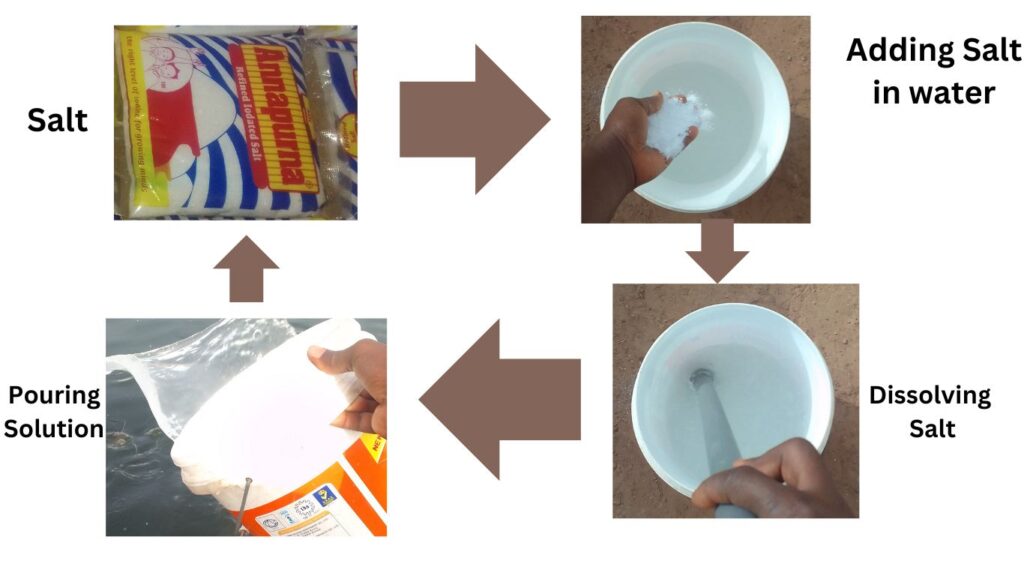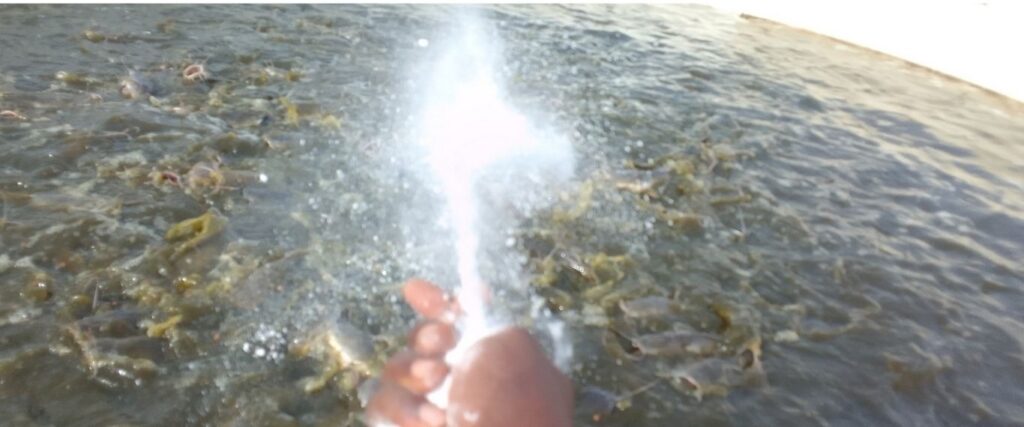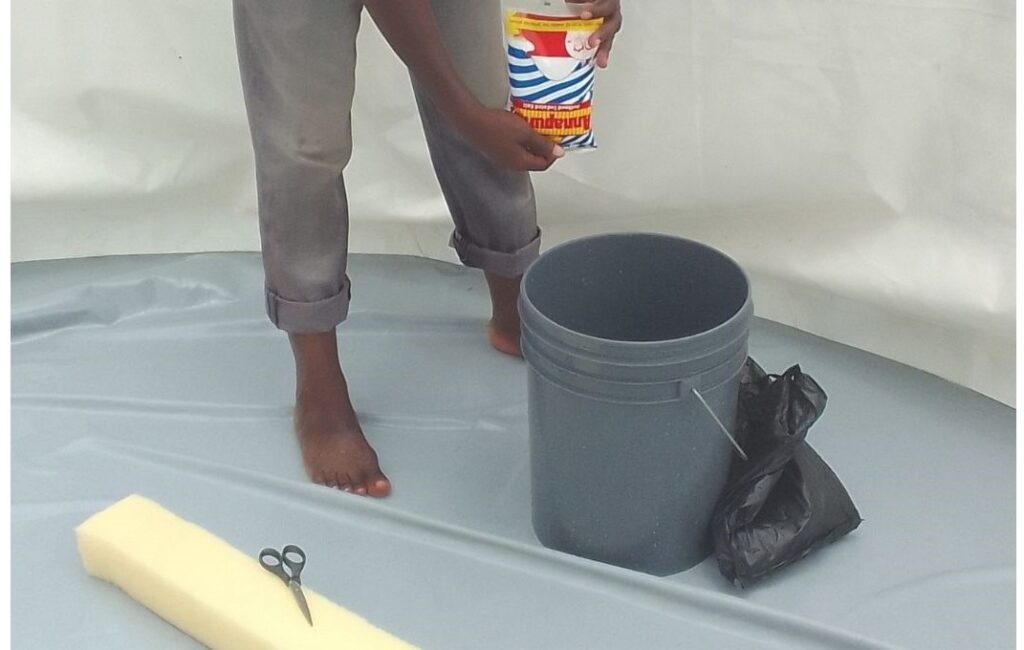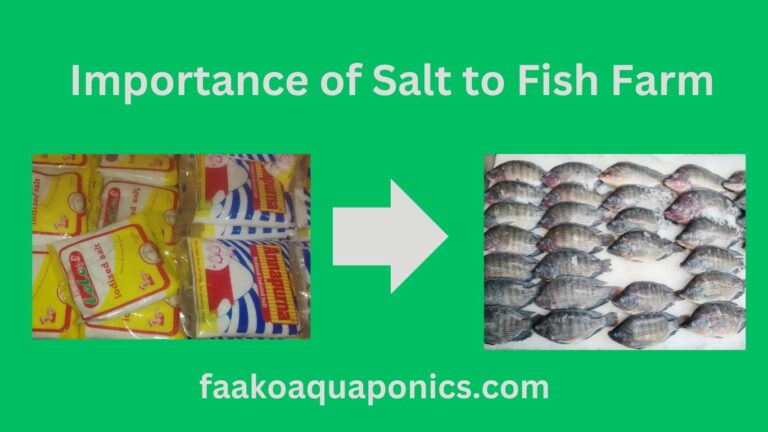Salt In fish farming has numerous Benefits. Salt serves as a First Aid which every fish farmer must have on the farm. In this post, we shall examine all you need to know regarding salt to your fish farm. We shall explore the benefits of salt to your fish, when to apply the salt, how to apply it, disadvantages of salt application, and any other relevant topics. So stay glued and enjoy the full article.
1. Elevating Fish Health
Salt acts as a natural enhancer for fish health by promoting skin integrity and supporting gill function. Regular incorporation of salt into the aquatic environment contributes to the overall well-being of fish, fostering resistance against common stressors and diseases.
When to Apply
Introduce salt to your fish farm during regular maintenance routines or when observing signs of stress among the fish population. Optimal levels can vary depending on the fish species and specific farming conditions.
How to Apply
Get water into a container, and dissolve the salt in the water before adding it to the fish tanks. Start with a conservative amount and monitor the fish’s response. Adjust the concentration gradually to achieve the desired benefits without causing undue stress.
2. Disease Prevention and Management
Salt’s natural antibacterial properties serve as a protective shield, preventing infections and reducing the risk of disease transmission within the fish population. It acts as a proactive measure in maintaining a healthy and disease-resistant aquatic environment.
When to Apply
Employ salt during disease outbreaks or as a preventive measure during stressful periods, such as transportation, environmental changes, or breeding seasons.
How to Apply
Incorporate or cast the salt into the water gradually, monitoring fish behavior and adjusting the quantity as needed. For disease management, consult with a veterinarian or experienced fish farmer for precise dosage recommendations.
3. Water Quality Enhancement
Salt contributes to water quality maintenance by reducing harmful microorganisms. It creates a cleaner and more stable environment, minimizing the risk of waterborne diseases and promoting ultimate conditions for fish growth.
When to Apply
Include salt regularly in the fish farming routine to uphold consistent water quality. Pay special attention during periods of environmental fluctuations (change of weather) or when introducing new fish into the system.
How to Apply
Dissolve salt in a separate container of water before evenly distributing it across the fish tanks. Ensure thorough mixing to prevent localized concentration variations.

Dissolving of Salt in Water
4. Uses of Salt in Fish Grading and Sorting
Salt is also vital when it comes to Fish Grading and Sorting. Fish Grading is the process where a farmer selects market fish from the rest of the other fish. The farmer may consider size, color, or whichever form he wants them. Fish Sorting, on the other hand, is when a farmer selects and separates fish into different ponds based on their sizes to enhance their growth and development.
In the world of aquaculture, every detail matters when it comes to the well-being of our fish companions. One often-overlooked element that plays a pivotal role in fish grading and sorting is salt. Beyond its culinary uses, salt serves as a multifaceted tool in ensuring the health and resilience of fish during the critical grading and sorting process. Let’s look at the profound importance and diverse uses of salt in this crucial aspect of fish farming.
1. Sedation and Stress Reduction
During the grading and sorting process, salt becomes a calming agent, effectively sedating fish. This not only reduces stress but also transforms the handling and sorting experience into a less traumatic ordeal for the fish.
Application
By introducing a carefully measured amount of salt into the fish tank, the stress response of the fish is minimized, helping an efficient sorting process.
2. Antibacterial Properties
Salt’s natural antibacterial properties stand as protection, preventing infections and reducing the risk of disease transmission during the delicate handling of fish.
Application
Infusing the grading water with salt creates an environment with mild antiseptic qualities, safeguarding catfish from potential infections resulting from handling stress or minor injuries.
3. Osmoregulation Support
Fish are highly sensitive to changes in water conditions, and salt becomes a key player in maintaining osmoregulation, ensuring a proper balance of water and electrolytes within the fish’s body.
Application
The addition of salt aids fish in adapting to fluctuating water parameters during the grading process, fostering overall well-being and minimizing the impact of environmental changes.
4. Mucus Protection
In the quest for self-defense, fish produce a protective mucus layer on their skin, and salt plays a crucial role in maintaining and enhancing this shield against external stressors.
Application
Salt actively promotes the natural slime coat on fish, creating an additional layer of protection during handling and sorting. This, in turn, reduces the risk of abrasions and injuries.
5. Transportation Support
Once graded and sorted, fish may embark on a journey to different tanks or locations. Salt steps in to minimize stress during transportation by adding salt to the water in which they would be transported.
Application
Incorporating salt into the transport water supports the fish’s stress response, ensuring a smooth transition between tanks and minimizing the stress associated with transportation. So the salt should be added to the transportation water and also to the recipient fish tank. In that way, when they are transferred, they will not feel the change of condition so much.
6. Water Quality Enhancement
Salt emerges as a guardian of water quality, actively reducing harmful microorganisms.
Application
The addition of salt to the grading tank elevates water quality, creating a cleaner and more stable environment. This not only reduces the risk of waterborne diseases but also maintains optimal conditions for the well-being of fish.
How to Treat Fish With Salt
The method of salt treatment depends on the disease organism, fish species, weight, and type of aquaculture unit. Treatment methods include short-term dips, prolonged baths, Pond baths, and Indefinite treatments, and Mixture of Salt With Feed.
Dip Treatments With Salt
Dip Treatment Involves exposing the fish to powerful salt solutions for a short period, usually thirty seconds to one minute. This method applies when a particular fish is separated into a small pond container to provide treatment. Or where the entire pond is a small one.
Strong Salt Solutions
A strong solution of salt is added to the water. Fish are kept in the salt solution for 30 to 60 minutes, or until they show signs of stress.
Indefinite Treatments With Salt
Indefinite Treatments are used when transporting, handling, or dealing with fish in large volumes of water, such as ponds. Low concentrations of salt can be used indefinitely in ponds.
In this method, one can dissolve the salt in a separate container and sprinkle it evenly around all the corners of the pond. Or, simply spread the salt evenly across all the corners of the pond. You can reduce the water in the pond before, or add the salt before topping the water if you are changing or topping the water. You can also spread it into that large volume of water but you will need more salt to do that.

casting salt into fish pond
Pond Bath With Salt
This is where the salt is dissolved in a container and used as a detergent to clean the inside of the pond before filling in the water and installing fish. This process disinfects the pond and also releases the stress of the fish. After dissolving the salt in the container, you can use a foam, sponge, rag, or any soft material that can soak water and rub the surface of the pond.

– 1
Note: avoid washing your pond with soap since it can contaminate the water. Even when you have to wash your pond with soap, you will need to Salt Bath the pond before introducing the fish into it.
A mixture of Salt With Feed
Depending on the nature of the disease, but when the disease is internal, you can also mix salt with their feed and feed them with that. But you should make sure not to overdose them since the salt may be going directly into their system.
Disadvantages of using salt in fish farming
While salt offers significant benefits when used appropriately, fish farmers should carefully weigh the potential disadvantages and considerations before implementing its use in their operations. Proper dosage, monitoring, and environmental management are key factors in mitigating any negative impacts of salt in fish farming. Let’s check some of the disadvantages salt application can also bring to fish farms.
1. Osmotic Stress
While salt can aid in osmoregulation, improper or excessive use can lead to osmotic stress in fish. This occurs when the salt concentration in the water is significantly different from the fish’s internal salt concentration, causing physiological imbalance and stress.
2. Impact on Freshwater Species
Some freshwater fish species are less tolerant to salt compared to others. Introducing salt into the environment may not be suitable for certain species, leading to adverse effects on their health and well-being
3. Environmental Impact
Salt used in fish farming can potentially impact the surrounding ecosystem if not managed properly. Excess salt runoff from fish farms can affect water quality in natural water bodies, leading to ecological imbalances and harm to native aquatic species.
4. Residue Accumulation
Over time, salt residues can accumulate in the fish farming system, including tanks, pipes, and equipment. This buildup may require regular maintenance and cleaning to prevent potential issues such as corrosion or decreased efficiency of equipment.
5. Regulatory Considerations
In some regions, there may be regulations or restrictions on the use of salt in fish farming, particularly concerning its impact on water quality and the environment. Compliance with these regulations is essential to avoid legal implications and potential fines
6. Potential for Medication Interference
Salt can interfere with the effectiveness of certain medications or treatments used in fish farming. It’s crucial to consider any ongoing treatment plans and consult with a veterinarian or aquatic health expert before incorporating salt into the fish farming system.
Conclusion
Despite the odds associated with using salt in your fish farm, it’s still worth using. In the dynamic world of fish farming, salt emerges as a versatile tool, influencing health, disease resistance, stress release, and water quality. Understanding when and how to leverage its benefits can transform fish farming practices, creating a flourishing aquatic environment. Start practicing the use of salt, and watch your fish farming endeavors reach new heights of success.
Bonus Tip
When you harvest your fish and want to process them and they are still alive – especially catfish which take longer time to die when out of water – you can add salt to them outside the water in a container in which they are in and within some minutes they will die.
Up to you
If you found this article helpful, kindly leave a comment in the comment section below or sign up for our newsletter for updates anytime a new article is released.





